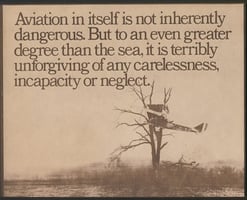As a private pilot, I’m in a community of individuals who are very focused on safety. We pride...
Leader Decision Making: the DECIDE framework

Kayleigh faced a difficult decision: she had two people on her team, both of whom were top-performers (albeit in different ways), and HR told her she could promote only one of them to senior manager.
She had been thinking about the decision, becoming nearly preoccupied with it for several weeks. She clearly wanted to make the right decision, and she was feeling the pressure leaders sometimes feel. Both candidates worked hard and were expecting promotion; Kayleigh was worried that whomever she didn’t choose would feel hurt, and that the fallout of that could create follow-on problems for her team.
Kayleigh was familiar with her brain’s tendency to short-cut difficult decisions using biases and heuristics, and she didn’t want to disadvantage either candidate in those ways. Contributing to her concern was that she had a long history with one of the candidates going back to college, and the other had been with the company in another division, and came from a different ethnic background. Kayleigh’s emotions told her she should be dubious of her brain’s emotional decision making.
Kayleigh often used a framework called DECIDE to help her make the decision. DECIDE is an acronym that means:
- Determine the problem
- Examine criteria
- Consider the alternatives
- Identify the best alternative
- Develop a plan of action
- Evaluate the solution
Kayleigh knew that by forcing herself to go through the rigor of a formal decision-making process, she increased the chances she would make a good decision that was fair to both people.
The first step, “Determine the problem,” was pretty self-evident, but Kayleigh worked through it any way. She had one promotion spot available, and two qualified candidates for it. There was no option not to promote one of them, and both candidates had indicated they felt ready for promotion.
Step two, “Establish the criteria,” wasn’t so easy. To confront her concerns about her unintentional bias, she prepared the best objective criteria on which she would examine the two:
- Time in role
- Their individual performance reviews
- Team performance
Kayleigh struggled with this one, and threw out a lot of other measures because they weren’t comparable across teams. While one team had fewer bugs, they also maintained a more mature codebase. Cycle time, MTTR, and other measures didn’t seem fair either, for similar reasons.
Kayleigh worked with her leader to “Consider the alternatives,” but despite negotiating with HR there simply wasn’t going to be any possibility of promoting both of them; Kayleigh would have to choose.
It was time to choose, which in DECIDE-parlance means to “Identify the best alternative.” Looking at the data, Kayleigh felt forced to conclude that Jyothi was the better choice. She was aware of the emotional discomfort this was causing, because she worried that her long-time friend would feel hurt and rejected, damaging their relationship. Still, Jyothi was the objectively better candidate.
With the decision made, it was time to “Develop a plan of action.” She thought about how she would break the news to Karen, and give the good news to Jyothi, being respectful to everyone involved. She scheduled the meetings, being mindful not to make them back-to-back to avoid Karen figuring it out before Kayleigh could deliver the news in a more nuanced, caring way. She thought about her messaging and advice she could give Karen to help her position herself better the next time. She met with Karen and Jyothi individually to deliver the news.
With all this laid out, Kayleigh "Evaluated the solution” afterward, to look at her own performance, and learn as much as she could so that the next time she found herself in this spot the process would be easier. She wrote down notes in OneNote so she could refer back to them later.
Using a formal decision-making process like DECIDE, while time-consuming, is useful for improving decision-making performance. In cases where the decision is highly consequential or otherwise emotionally-charged, the formality gives our rational brains a fair chance to compete with the heuristics and biases our brains bring forth to help us avoid emotionally uncomfortable choices.



